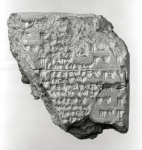December 4th Total Solar Eclipse!
 Have you been gearing up and packing for the December 4th total solar eclipse? If not, you are not alone! The path of totality for this eclipse will be limited to distant Antarctica and the surrounding waters. So very few people will have snow boots on the ground there to enjoy the 1′:54″ view of the solar corona that day. The partial eclipse outside the path of totality is no consolation prize. It envelops the ocean south of Australia, South America, and Africa and barely makes landfall at the very tips of South America, Australia, and New Zealand. Much of the southern tip of Africa will see at most a “nibble” taken out of the Sun.
Have you been gearing up and packing for the December 4th total solar eclipse? If not, you are not alone! The path of totality for this eclipse will be limited to distant Antarctica and the surrounding waters. So very few people will have snow boots on the ground there to enjoy the 1′:54″ view of the solar corona that day. The partial eclipse outside the path of totality is no consolation prize. It envelops the ocean south of Australia, South America, and Africa and barely makes landfall at the very tips of South America, Australia, and New Zealand. Much of the southern tip of Africa will see at most a “nibble” taken out of the Sun.
One hardy group that will make its way to the seventh continent is from Williams College in Massachusetts. It is organized by Dr. Jay M. Pasachoff, Field Memorial Professor of Astronomy and director of Williams College’s Hopkins Observatory. He’s no stranger to eclipse chasing, having traveled the world since 1959 to view and gather scientific data on eclipses. This expedition, with his students, was made possible by a three-year grant from the U.S. National Science Foundation (NSF) that included funds for the school’s studies at the July 2, 2019 total eclipse in Chile and December 14, 2020, total eclipse in Argentina. The NSF also funded prior eclipse expeditions organized by Pasachoff. Several Tele Vue-76 scopes and other Tele Vue gear will be on this latest trip.

Fortuitously, December is one of the warmer months on “The Ice” (records indicate temperatures can get above freezing) and the polar latitude allows the southern summer Sun to be above the horizon most of the time. That’s the good news. While the interior of the continent has few clouds, the start and end of the path of totality is over the coastal waters and is subject to cloud cover. The Sun will be scooting low along the horizon and only reaching about 1½ fists above the horizon at totality.

Gorst, Martin director. Eclipse Over America. Wistia.com, uploaded by NOVA. Airdate: August 21, 2017. Link: https://nova.wistia.com/medias/py80aesc2x (frame at 7:59).
Dr. Pasachoff’s expeditions to the 2019 and 2020 total solar eclipses with his students and collaborators has resulted in several papers and presentations on topics that include validating the predicted shape of the solar corona, studying specific spectral bands in the corona, and a paper on total eclipse near-surface air temperature fluctuations.

This event is at the opposite pole from this year’s June total eclipse that passed by the north pole. The maximum duration is just under two minutes and the Sun is a lowly 17° above the horizon at “greatest eclipse” (when the axis of the Moon’s shadow cone passes closest to Earth’s center). Populated areas at the far southern tip of the surrounding continents and large islands will see a partial event where a small “nibble” will appear to be taken from the Sun.

For the Babylonian astronomer-priests, of ancient Mesopotamia, predicting an eclipse was a matter of life or death — literally. It was thought that a solar eclipse foretold the death of the king. With advanced notice, a “substitute” king was selected, “dressed in the king’s garment, declared to be the king, and made to participate in other rituals investing him with royal identity”1. A substitute queen was brought into the picture and the “real” king went into hiding. After the eclipse danger was over, the substitute royalty was sacrificed and the real king came out of hiding. But things didn’t always go as planned. In 1861 B.C., the day of a total solar eclipse over what is now southern Iran, the real King died from an accident. The substitute king, a gardener by trade, continued to rule for another 24-years!
- Williams College Solar Eclipse Expeditions page list past and future expeditions launched by Willams College and all the eclipses observed by Jay Pasachoff.
- Williams College press release: Astronomer Jay Pasachoff Receives NSF Grant to Support Solar-Eclipse Research
- National Science Foundation 2019 Award Abstract to Williams College.
- Asteroid 5100 Pasachoff citation.






Excellent